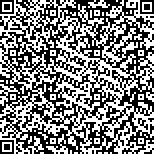| 本文已被:浏览 2448次 下载 1840次 |

码上扫一扫! |
|
|
| 海州湾大竹蛏种质资源保护区生态环境质量分析与评价 |
|
尚聪聪1,2, 肖慧1, 朱琳3,4, 夏斌3,4, 陈碧鹃3,4, 崔正国3, 唐学玺1,4, 曲克明5
|
|
1.中国海洋大学海洋生命学院 青岛 266003;2.中国水产科学研究院黄海水产研究所
农业农村部海洋渔业可持续发展重点实验室 山东省渔业资源与生态环境重点实验室 青岛 266071;3.中国水产科学研究院黄海水产研究所 农业农村部海洋渔业可持续发展重点实验室 山东省渔业资源与生态环境重点实验室 青岛 266071;4.青岛海洋科学与技术试点国家实验室海洋生态与环境科学功能实验室 青岛 266071;5.中国水产科学研究院黄海水产研究所 农业农村部海洋渔业可持续发展重点实验室 山东省渔业资源与生态环境重点实验室 青岛 266071
|
|
| 摘要: |
| 本研究根据2018年5、8月对海州湾大竹蛏(Solen grandis)国家级水产种质资源保护区表层海水营养盐、重金属、石油类及相关环境因子的调查数据,运用综合质量指数法对该保护区海水生态环境质量进行综合评价,并采用富营养化指数和有机污染指数从不同角度分析该保护区的海水环境质量。结果显示,除部分站位无机氮(DIN)含量略超标外,海州湾保护区其他监测因子均符合国家Ⅰ类海水水质标准。2018年海州湾保护区海水综合质量指数范围为0.31~0.39,属于尚清洁等级。N/P值均大于Redfield系数,且磷酸盐(PO4-P)含量较低,表明该海域营养盐结构为磷限制。富营养化指数范围为0.05~0.27,海水为贫营养状况。有机污染指数范围为–0.24~0.81,该水域有机污染程度较轻。与2008~2013年历史调查数据相比,近年来,海州湾保护区海水生态环境质量保持较好。 |
| 关键词: 海州湾 水产种质资源保护区 综合质量 富营养化 有机污染 |
| DOI:10.19663/j.issn2095-9869.20191216002 |
| 分类号: |
| 基金项目: |
|
| Ecological environment quality analysis and evaluation of Solen grandis national germ plasm resource protection area in Haizhou Bay |
|
SHANG Congcong,XIAO Hui,ZHU Lin,XIA Bin,CHEN Bijuan,CUI Zhengguo,TANG Xuexi,QU Keming
|
|
1.College of Marine Life Sciences, Ocean University of China, Qingdao 266003;2.Yellow Sea Fisheries Research Institute, Chinese Academy of Fishery Sciences, Key Laboratory of Sustainable Development of Marine Fisheries, Ministry of Agriculture and Rural Affairs, Key Laboratory of Fishery Resources and Ecological Environment in Shandong Province, Qingdao 266071;3.Marine Ecology and Environmental Science Laboratory, Pilot National Laboratory for Marine Science
and Technology (Qingdao), Qingdao 266071
|
| Abstract: |
| Anthropogenic activities and environmental contamination have degraded the marine germ plasm resources as well as the environmental quality of their habitats in China. Therefore, China actively promotes the establishment of aquatic germ plasm resource protection areas. However, studies focused on the environmental quality of the germ plasm resource protection areas remain limited. In this study, based on survey data for environmental factors such as nutrients, heavy metals, and petroleum hydrocarbons obtained in May and August 2018, we evaluated the ecological environment quality of a Solen grandis national germ plasm resource protection area in Haizhou Bay using the comprehensive quality index. In addition, the eutrophication index and the organic pollution index were used to analyze the water environment quality of the protection area. According to the survey findings, all monitored factors satisfied the classⅠseawater quality national standard, excluding inorganic nitrogen concentrations at some stations. In 2018, the comprehensive quality index of this Solen grandis national germ plasm resource protection area in Haizhou Bay was 0.31~0.39, and the water quality in the area was slightly clean. The N/P ratios were higher than the Redfield ratio and the phosphate concentrations in seawater were much lower than the amounts required for normal phytoplankton growth and development, which implied that phosphorus was a major nutrient limiting biological productivity in the area. The eutrophication index was in the 0.05~0.27 range, which indicated that the nutritional level of the seawater in the protection area was poor. The organic pollution index was in the –0.24~0.81 range, which indicated favorable water quality in the protection area. These evaluation results suggest that the seawater environment quality in the Solen grandis national germ plasm resource protection area in Haizhou Bay has been maintained appropriately when compared with the historical survey data from 2008~2013. |
| Key words: Haizhou Bay Germ plasm resource protection area Comprehensive quality Eutrophication Organic pollution |